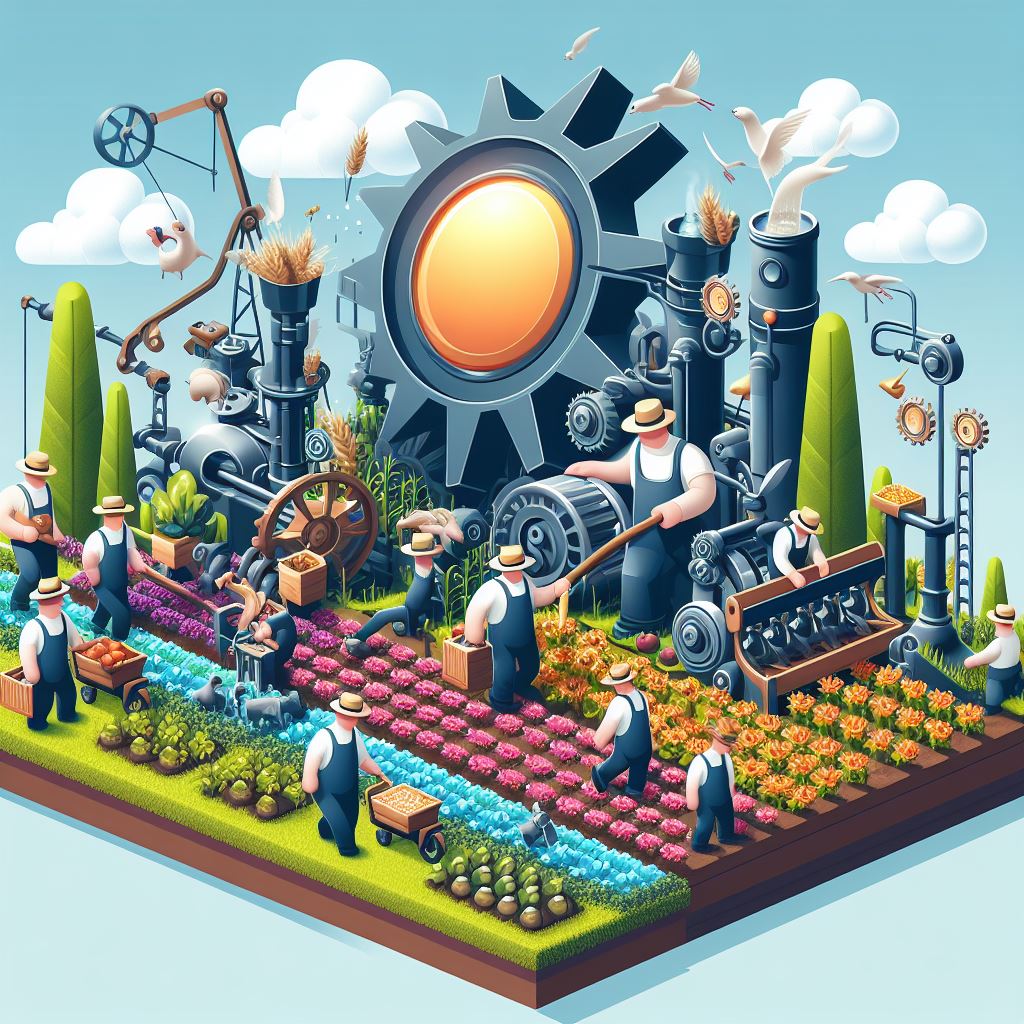
Precision Agriculture’s Guiding Hand: A Look at Automation in Modern Farming
Imagine a future where fields dance to the rhythm of robots, where drones paint the sky with precision, and automated systems orchestrate every aspect of farm management with meticulous efficiency. This is the promise of automation in precision agriculture, a revolution that transforms the once-manual art of farming into a data-driven ballet of technology and innovation.
No longer confined to factories and assembly lines, automation is taking root in the fertile soil of modern agriculture, taking on diverse forms:
Planting and Seeding:
- Automated planters: Guided by GPS and sensors, these machines plant seeds with precise spacing and depth, optimizing germination and maximizing yield potential.
- Drone seeding: Drones equipped with seed-dispensing technology can cover vast areas quickly and efficiently, particularly in remote or challenging terrain.
Cultivation and Weed Control:
- Autonomous robots: Equipped with computer vision and AI, these robots navigate fields, identify weeds, and apply targeted herbicides, minimizing chemical use and protecting crops.
- Inter-row cultivation robots: These robots navigate between crop rows, tilling the soil and controlling weeds, reducing labor needs and soil erosion.
Harvesting and Transportation:
- Automated harvesters: These machines combine reaping, threshing, and cleaning in one seamless operation, optimizing efficiency and minimizing post-harvest losses.
- Autonomous tractors and trailers: GPS-guided tractors and trailers navigate fields and transport harvested crops, reducing manual labor requirements and improving safety.
Livestock Management:
- Automated milking systems: These systems allow cows to be milked at their own pace, improving animal welfare and milk quality while reducing labor needs.
- Automated feeding systems: Robots or automated feeders distribute precise amounts of feed to livestock, optimizing nutrition and reducing waste.
Automation, however, thrives in collaboration. Here are some of its key partners in the precision agriculture revolution:
- Sensors and data analysis: Real-time data from sensors on soil, weather, and crop health guides automated systems, ensuring they operate efficiently and adapt to changing conditions.
- GIS and GPS: These technologies provide accurate location data and map-based visualizations, enabling precise navigation and decision-making for automated systems.
- Artificial intelligence and machine learning: AI algorithms analyze data and learn from experience, allowing automated systems to adapt and improve their performance over time.
Embracing automation requires investment, training, and a willingness to adapt. But the rewards are undeniable:
- Increased productivity and efficiency: Automation frees up farmers’ time for other tasks, reduces labor costs, and allows for faster and more efficient completion of farm operations.
- Improved crop yields and quality: Precise planting, targeted weed control, and optimized harvesting lead to higher yields and better crop quality.
- Enhanced safety and reduced risk: Automation minimizes manual labor and exposure to hazards, improving farm safety and reducing the risk of injuries.
- Sustainable land management: By optimizing resource use and minimizing waste, automation contributes to a more sustainable future for agriculture.
Automation, then, is not just a tool; it’s a guiding hand. It empowers farmers to focus on the strategic aspects of their operations, while technology takes care of the repetitive tasks with precision and efficiency. By embracing automation and its partners, farmers become not just cultivators of the land, but architects of a future where technology and innovation work hand-in-hand to nurture a bountiful and sustainable harvest for generations to come.